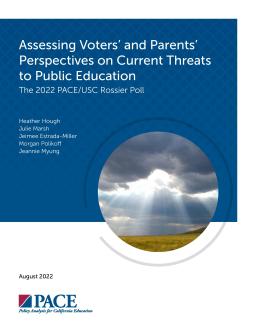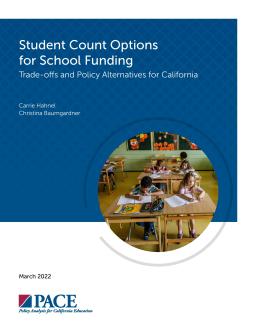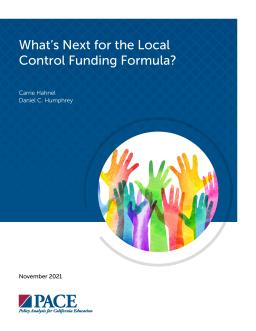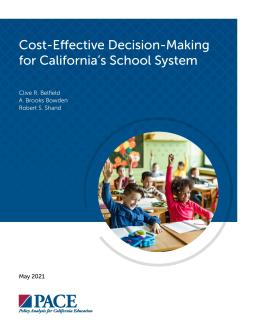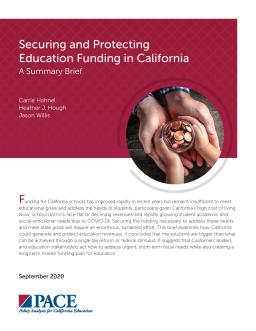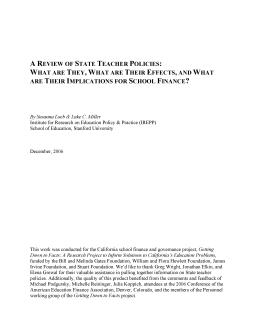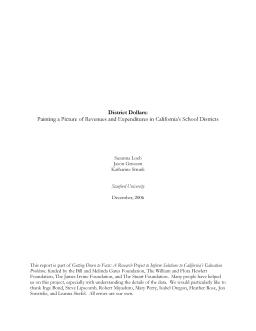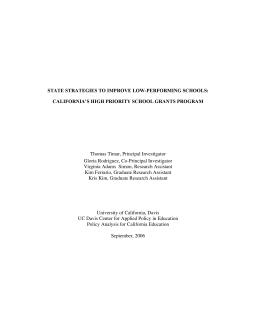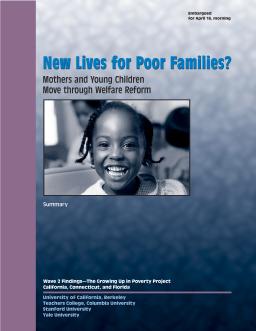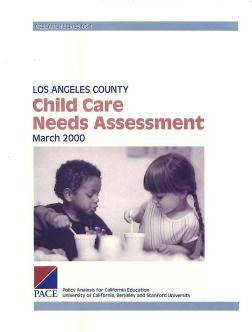Summary
The 2021-22 academic year in California was challenging for public education due to eight issues that threaten student learning, schools, and public education itself, including gun violence, declining enrollment, and long-term funding inadequacy. These issues also have a disproportionate impact on marginalized communities and highlight long-standing systemic inequities. In July 2022, PACE and USC Rossier School of Education conducted a poll of California voters to determine their views and priorities on public education.
Summary
Summary
This report examines California's Local Control Funding Formula (LCFF) after eight years and suggests refinements to improve equitable funding, opportunities, and outcomes. Based on interviews, research, and data analysis, the report identifies four areas for improvement: revisiting and refining the funding formula, modernizing funding for students with disabilities, equitably distributing effective teachers, and strengthening transparency, engagement, and accountability. LCFF has been viewed as an improvement over the previous system yet gaps between equity goals and local outcomes remain.
Summary
The COVID-19 pandemic has affected all students; however, its impact has been particularly devastating for students of color, students from low-income families, English learners, and other marginalized children and youth. As transmission rates decline and vaccination rates increase in California, many are eager to return to normalcy, but we must all recognize that even the prepandemic normal was not working for all students. The 2021–22 school year, therefore, constitutes a critical opportunity for schools to offer students, families, and educators a restorative restart.
Summary
Summary
California is the wealthiest state in the US, yet its school funding is insufficient to meet educational goals due to the high cost of living. A series of 12 charts provide an explanation of what is happening, with solutions outlined in the final section of an accompanying report.
Summary
California schools' funding had improved, but still fell short of what is necessary to meet the state's goals. Now, schools face three major challenges: declines in student achievement and social-emotional well-being due to COVID-19, increased costs associated with distance learning and school reconfiguration, and the need to tighten budgets. Securing necessary funding will require an enormous and sustained effort from many stakeholders to improve schools and student outcomes and strengthen the economic and social outlook for future generations.
Summary
In the run-up to 2020 elections, where do California voters stand on key education policy issues? This report examines findings and trends from the 2020 PACE/USC Rossier poll. Key findings include rising pessimism about California education and elected officials, continued concern about gun violence in schools and college affordability, and negative opinions about higher education. However, there is substantial support for increased spending, especially on teacher salaries.
Summary
The 2018 Getting Down to Facts II research project drew attention to California’s continued need to focus on the achievement gap, strengthen the capacity of educators in support of continuous improvement, and attend to both the adequacy and stability of funding for schools. Based on the nature of the issues and the progress made in 2019, some clear next steps deserve attention as 2020 unfolds.
Summary
Summary
Summary
Summary
The report examines the effectiveness of a large-scale performance-based incentive program in California schools. Results show that the program had a small but positive impact on student test scores in math and English, with larger effects in schools with high levels of poverty. However, the authors caution that incentive programs may have unintended consequences and should be implemented with care.
